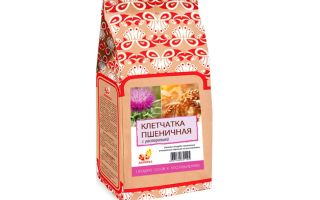Content
- 1 What is fiber
- 2 Fiber composition
- 3 The beneficial properties of fiber
- 4 Slimming fiber
- 5 How to take fiber for weight loss
- 6 How to eat fiber properly
- 7 How much fiber do you need per day
- 8 Sources of fiber
- 9 Fiber-rich foods
- 10 Fiber tablets
- 11 Fiber harm
- 12 Contraindications to the use of fiber
- 13 How to choose fiber
- 14 Conclusion
- 15 Reviews of doctors
- 16 Reviews and results of those who have lost weight
Fiber is one of the most important nutrients. It is necessary for the normal functioning of the gastrointestinal tract and other organs. Although people consume it every day, not everyone knows the benefits and harms of fiber.
What is fiber
In translation, fiber means fiber, or thread. Therefore, in the literature you can find the name "dietary fiber". Indeed, at multiple magnifications under a microscope, it resembles long filaments.
Fiber is a type of carbohydrate. It belongs to the group of complex sugars. The peculiarity of this carbohydrate is that the enzymes of the gastric juice and pancreatic secretion are not able to break it down into simpler compounds: fructose and glucose. Therefore, it is not absorbed in the small intestine like other sugars. That is, the carbohydrate leaves the body in an almost unchanged form.
Dietary fiber does not contain vitamins and other beneficial microelements. In theory, it is useless. But in practice this is not at all the case. All about the benefits and harms of fiber for the body further.
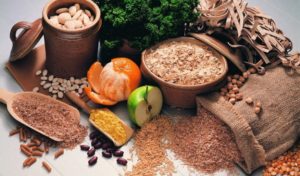
Fiber composition
Fiber is a polysaccharide, or complex carbohydrate. This variety has the largest mass of all sugars. It is composed of many glucose monosaccharides. Combining into large groups, monosaccharides form di-, and then polysaccharides. This is the structure of dietary fiber at the molecular level.
If we consider the structure of a carbohydrate at the cellular level, it turns out that it is a wall of various plants. It enters the structure of their membrane, forming threads, or fibers. Where did the name of fiber come from.
The beneficial properties of fiber
It was previously noted that dietary fiber does not contain vitamins and other beneficial trace elements. Despite this, the benefits of eating fiber are hard to overestimate. Speaking about the positive effect of the polysaccharide, it is worth considering 2 of its varieties: soluble and insoluble.
The first type of carbohydrate actively absorbs water and swells in the gastrointestinal tract. As a result, it changes its consistency, it becomes more like jelly. Thanks to this, the process of digestion of food slows down, hunger is satisfied for a long time.
Soluble dietary fiber is beneficial for diabetics. They help to lower the concentration of glucose in the blood. In addition, this type of fiber reduces low-density lipoprotein levels. People call them "bad cholesterol". The accumulation of lipoproteins leads to the deposition of fatty plaques on the inner wall of blood vessels and the development of atherosclerosis. The picture shows products with similar beneficial properties.
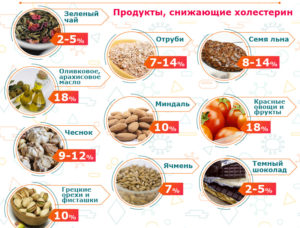
The benefits of insoluble dietary fiber are enormous. Below are the main benefits:
- increase the contractility of the intestinal wall, thereby accelerating peristalsis;
- are effective in preventing constipation;
- effective in the complex treatment of stool disorders;
- promote the removal of toxic substances and poisons from the body;
- regulate acidity in the intestinal lumen;
- reduce the risk of developing tumor and inflammatory diseases of the colon.
Dietary fiber has a positive effect on the condition of the skin. By removing fungi and bacteria from the body, they help to cleanse the skin, reduce the number of acne and acne. This fact does not have a strong evidence base, but many who have tried it agree with this statement.
Some researchers say that the beneficial property of dietary fiber is its effectiveness in the complex therapy of allergic reactions and bronchial asthma. This is explained by the fact that intestinal microflora disturbance plays a role in the development of allergies. And fiber is able to restore the normal ratio of microorganisms.
Slimming fiber
A diet on fiber will help cope with excess weight. Moreover, both soluble and insoluble fibers have this useful property. The first type of carbohydrate keeps the feeling of fullness for a long time, thereby forcing the person to eat less food. The second type stimulates intestinal peristalsis. Due to this, sugars and fats are absorbed into the body to a lesser extent. Most of them are taken out.

How to take fiber for weight loss
The benefits of fiber for weight loss are achieved with the use of pharmaceutical fiber and foods that are rich in it. If we talk about pharmacy carbohydrates, in order to lose weight, up to 60 g of the substance are taken per day. For this, 1 tbsp. l. purchased fiber is diluted in 250 ml of water. The solution is drunk half an hour before meals. It is allowed to drink no more than 6 tbsp per day. l.
The biggest disadvantage of a dietary fiber solution is an unpleasant taste. If a person is sensitive to it, fiber can be added to ready-made meals. Carbohydrates will not spoil the taste of soups, broths, yoghurts. They increase the satiety of the dish without affecting its calorie content.
Some nutritionists recommend doing a fasting day once a month. Moreover, in 24 hours it is only allowed to drink kefir and eat 6 tbsp. l. fiber. The maximum allowable unloading period is 3 days. If you sit on such a strict diet for longer, it will lead to depletion of the body and will only bring harm.
How to eat fiber properly
People who regularly eat predominantly processed foods or baked goods will find it difficult to immediately consume the required amount of fiber per day. Therefore, below are the rules that will help you introduce beneficial polysaccharides into your diet without harm to your health and get the most of the benefits from them:
- Increase the dose gradually until the daily rate is reached.
- By increasing the consumption of saccharides, increase the amount of water you drink.
- Eat vegetables and fruits raw. Only light roasting, steaming or braising is allowed.
- A higher percentage of fiber is found in the peel, and not in the pulp of a vegetable or fruit. Therefore, if possible, do not clean the products.
- Eat fiber-rich foods in the morning to provide energy throughout the day.
How much fiber do you need per day
On average, a person needs to consume 20-30 g of dietary fiber per day. This daily rate is valid for adults and children. People with increased energy requirements consume more fiber. For example, athletes, when gaining weight, eat 40 g per day.
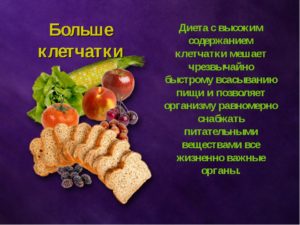
In an urbanized world, people consume 2-3 times less fiber than they should. This is due to the fact that the majority prefers digestible carbohydrates: cakes, bread, rolls, semi-finished products. In such products, the amount of dietary fiber is extremely low. Therefore, city dwellers need to seriously think about their diet.
Sources of fiber
Many have heard of the benefits of vegetables and fruits for the length of the gastrointestinal tract due to their high content of dietary fiber. But there are actually other foods that are high in fiber. You can also buy ready-made dry dietary fiber at the pharmacy. They are in demand among people who want to lose weight, athletes, constipated.
Dry fiber
The benefits of dry fiber are no different from those found in vegetables, fruits, and other foods. The undoubted advantage of powder polysaccharides is ease of use. You can accurately calculate what dose of a substance enters the body. Therefore, dry fibers are used for medicinal purposes, for weight loss. There are several types of powdered carbohydrates:
- wheat;
- Siberian;
- from flax seeds;
- from milk thistle seeds;
- pumpkin;
- oat;
- hemp.
Wheat
Overweight people will definitely find benefits in wheat fiber. It belongs to the group of soluble fibers. Once in the gastrointestinal tract, it swells. Thanks to this, the feeling of hunger is absent for several hours.
Wheat-derived polysaccharides contain cellulose and lignin. These elements have a beneficial effect on the colon wall. They contribute to the repair (restoration) of the mucous membrane, cleanse it of toxins.
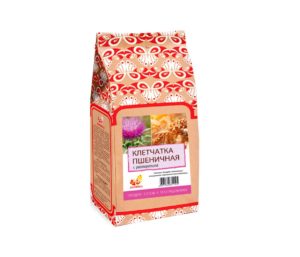
Siberian
Siberian fiber is very common in Russia. It is made by many companies. In addition to powder, you can find dry smoothies, yoghurts, herbal teas and even marmalade containing dietary fiber.
The benefits of Siberian fiber, like wheat, are in weight loss and bowel cleansing. This drug does not belong to the drug group. It is considered a dietary supplement. The difference between Siberian fibers and ordinary bran is the absence of unnecessary impurities.
Antioxidant and anti-allergic properties further enhance the benefits of Siberian fiber for the body.

From milk thistle seeds
In addition to the beneficial properties of all types of dietary fiber already listed above, hepatoprotective effect is attributed to fiber from milk thistle seeds. It protects liver cells (hepatocytes) from the effects of toxic substances: alcohol, medicines, heavy metal salts. Polysaccharides promote the formation of new cells to replace the destroyed old ones.
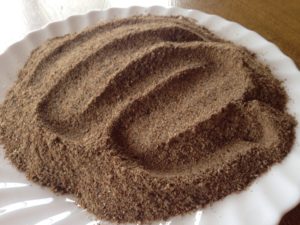
Linseed
In addition to dietary fiber, flax seeds contain a large amount of mucus. It has an enveloping effect. After taking a handful of seeds, mucus coats the lining of the stomach and intestines. Therefore, flax is used in the complex therapy of inflammatory and ulcerative diseases of the gastrointestinal tract.
Flaxseed fiber itself has antioxidant properties. A warm infusion helps to get rid of dry cough.
Pumpkin
Pumpkin fiber is a dietary product. With its regular intake, the general condition of the body improves. It promotes weight loss, increases the body's immune response, and improves bowel function.
Oatmeal
Oat fiber is one of the most effective treatments for constipation. After taking 1 tbsp. l. product after 8 hours, bowel movement occurs.
Hemp
The benefits of hemp fiber are primarily in weight loss. Regular intake of this nutritional supplement in combination with exercise and a balanced diet effectively reduces the layer of subcutaneous fat. In addition, it improves immunity, lowers cholesterol levels, slows down cell aging and prevents cell death.
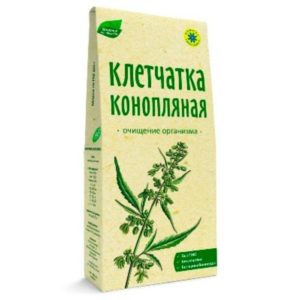
Fiber-rich foods
The benefits of foods containing fiber cannot be overstated.Dishes with its content should be present in everyone's daily diet. Fiber foods are inexpensive. They are easy to prepare. Therefore, there should be no problems with introducing them into your diet. The table lists the most fiber-rich foods.
|
Food product |
Dietary fiber content per 100 g of product |
|
Bran |
42-45 g |
|
Flax seeds |
20-30 g |
|
Mushrooms |
22-25 g |
|
Dried fruit |
10-15 g |
|
Whole grain cereals (buckwheat, oat) |
8-12 g |
|
Beans (chickpeas, lentils, beans) |
10-13 g |
|
Whole grain baked goods |
9-10 g |
|
Berries |
6-7 g |
|
Fruit |
3-5 g |
The numbers in the table are arbitrary, the number of fibers can vary up or down. But it is unambiguous that bran, flaxseed, mushrooms and dried fruits are the richest in these polysaccharides. Eating 100 g of bran a day fully provides a person with a daily need for fiber.
Oats contain a special type of fiber called beta-glucagon. It is most active in reducing blood cholesterol levels. Therefore, regular consumption of oatmeal is an effective prevention of atherosclerosis. To increase the content of useful polysaccharides, dried fruits can be added to the porridge.
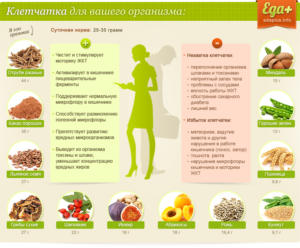
Fiber tablets
Almost any kind of fiber can be found in powder and tablet forms. The advantage of tablets is ease of use, accurate dose calculation. The fibers in this dosage form are produced from microcrystalline cellulose (MCC). It is a substance made from tough particles that are released from cotton. In their composition and properties, they correspond to their natural counterparts.
Increase the dose of tablets gradually until they reach the recommended daily allowance of 50 pcs. It is important to remember that no pill can completely replace natural fiber.
Fiber harm
Dietary fiber powders and tablets are not considered medicines. But they, like medicines, can do a lot of harm if taken incorrectly. Supplements are contraindicated for people with diarrhea. After all, a strong laxative effect will only aggravate the problem.
If you take medicines and dietary fiber at the same time, the balance of benefits and harms of fiber in powder does not change for the better. The laxative and sorbing (suction) effects of the food additive prevent the full flow of medicines into the body. The effectiveness of drugs decreases.
Milk thistle powder can do a lot of harm to people who are hypersensitive to this plant. They have nausea, vomiting, headache. In this case, it is necessary to stop taking the supplement.
Contraindications to the use of fiber
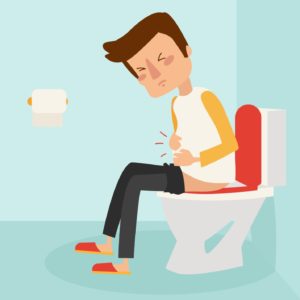
Fiber is not recommended for the following categories of people:
- with allergies to foods containing dietary fiber;
- suffering from diarrhea;
- with serious liver pathologies;
- pregnant women and mothers who are breastfeeding;
- with exacerbation of stomach ulcers or gastritis (except for flax seeds).
How to choose fiber
When choosing fiber, you should pay attention to which plant it is obtained from. If allergic reactions to this plant have previously been reported, other options should be considered. They also pay attention to the desired effect: weight loss, treatment of constipation, strengthening of immunity.
Conclusion
The benefits and harms of fiber are truly incomparable. Dietary fiber has many beneficial properties: it reduces body weight, improves bowel function, and increases immunity. It must be remembered that fiber is taken in short courses. With prolonged use, the absorption of nutrients worsens, which does more harm than good.
Reviews of doctors


